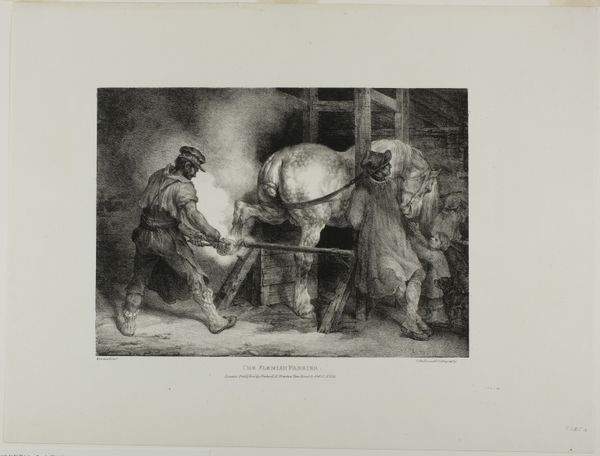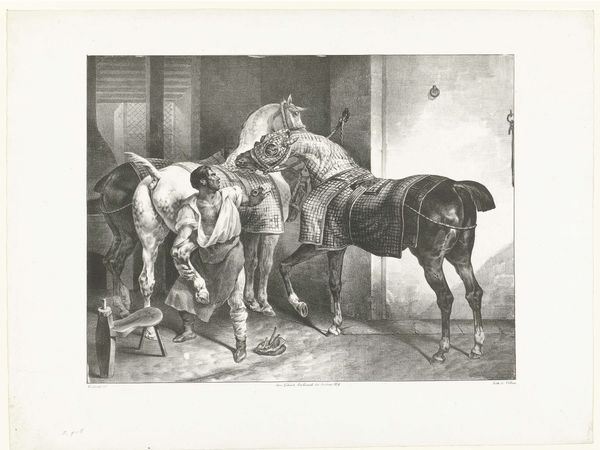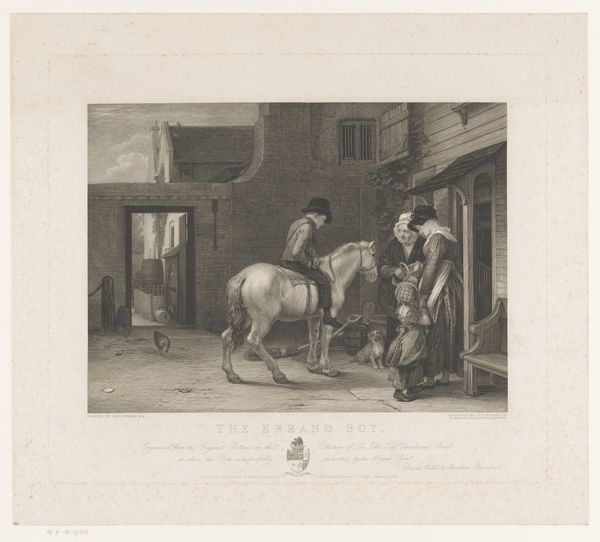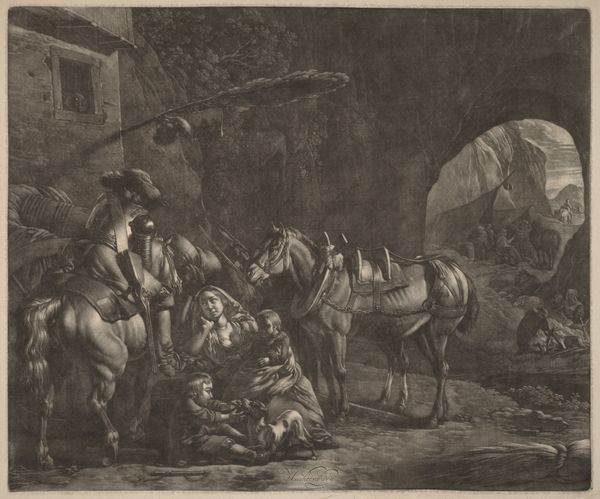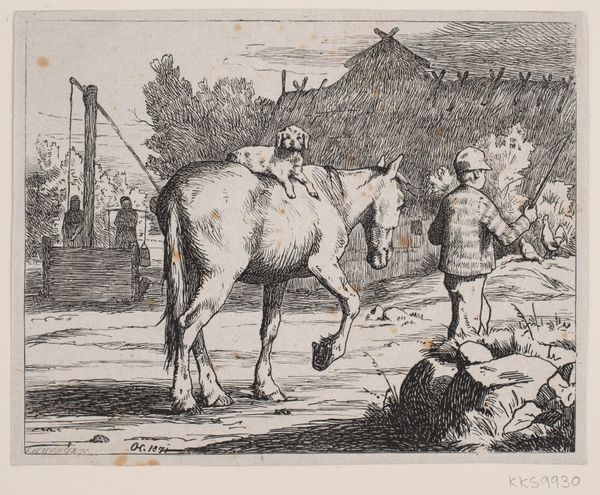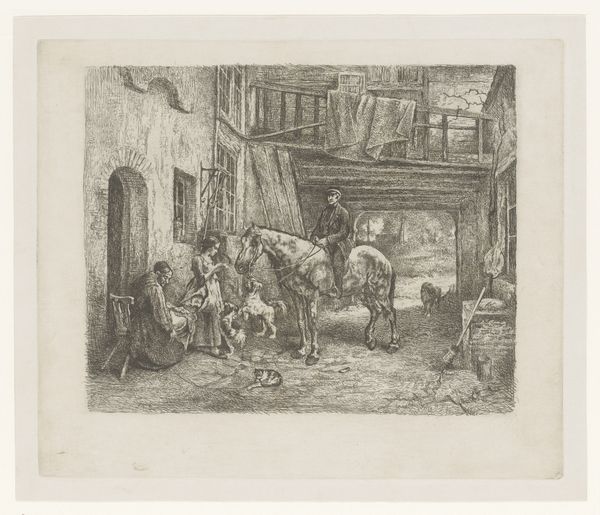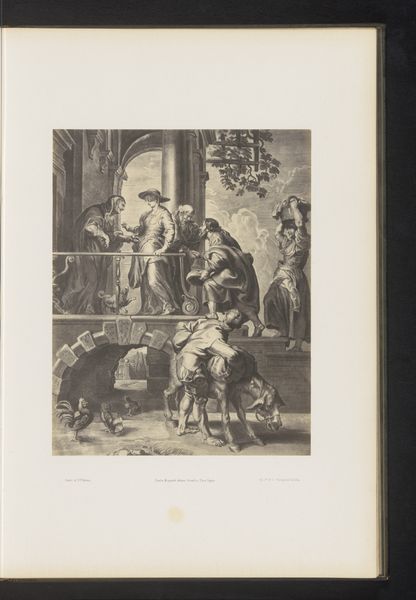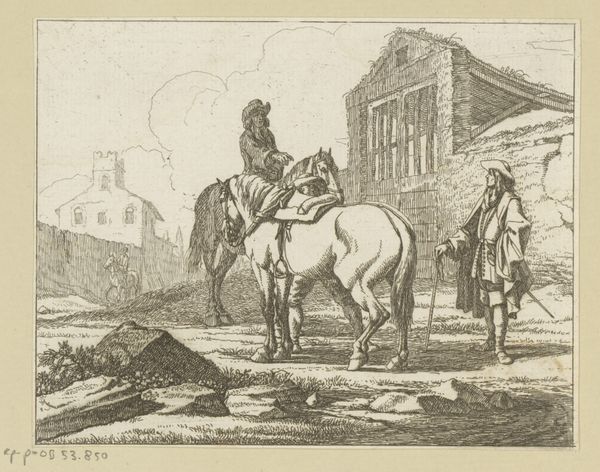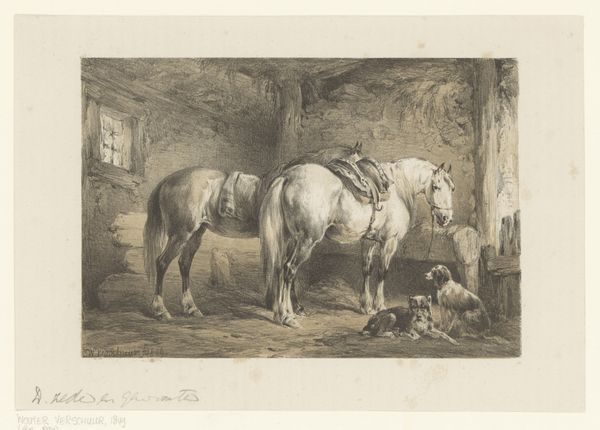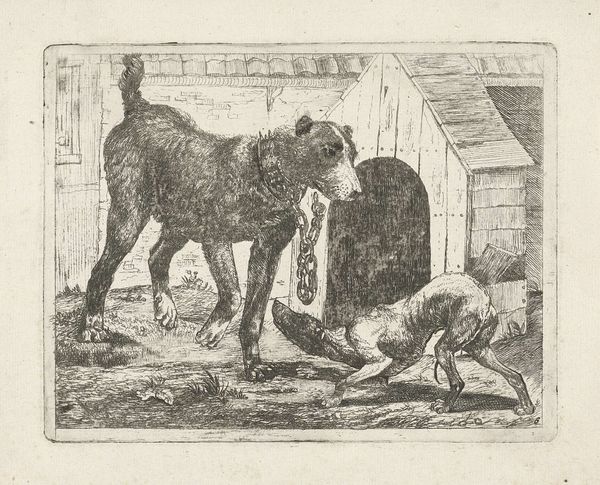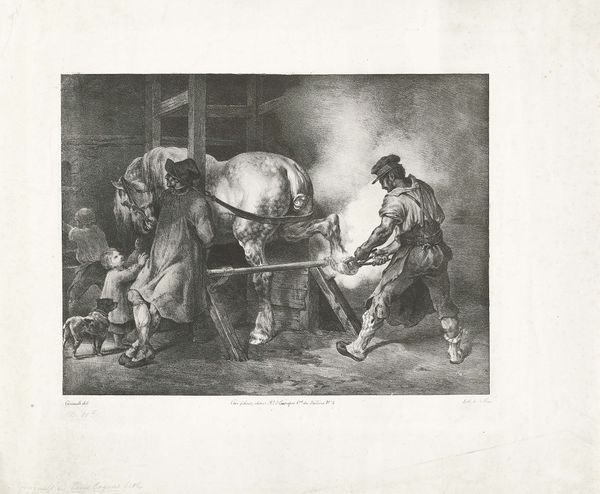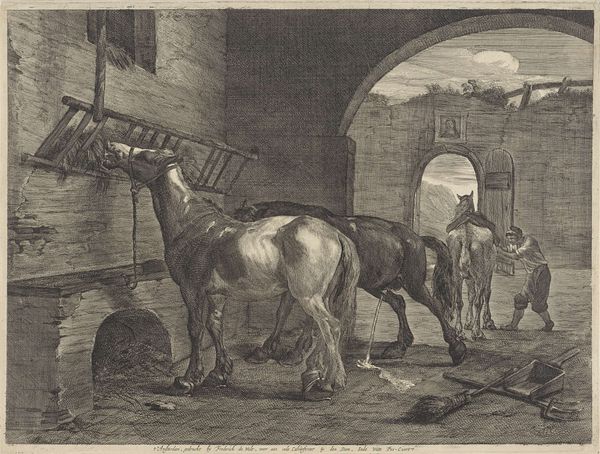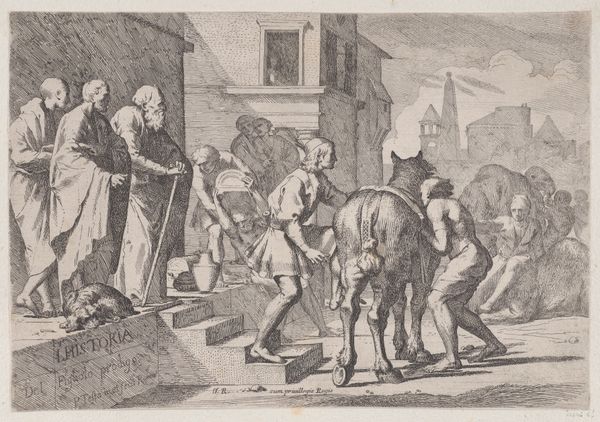
The English Farrier, plate 10 from Various Subjects Drawn from Life on Stone 1821
0:00
0:00
drawing, lithograph, print, paper, charcoal
#
drawing
#
lithograph
# print
#
landscape
#
charcoal drawing
#
figuration
#
paper
#
romanticism
#
genre-painting
#
charcoal
#
history-painting
#
charcoal
Dimensions: 280 × 370 mm (image); 311 × 401 mm (sheet)
Copyright: Public Domain
Curator: Welcome, everyone. We're looking at "The English Farrier, plate 10 from Various Subjects Drawn from Life on Stone" by Théodore Géricault, a lithograph from 1821, housed here at The Art Institute of Chicago. Editor: My first impression is how dramatically Géricault uses light and shadow. It creates such a moody, almost theatrical scene, wouldn't you say? Curator: Absolutely. But I find myself thinking about the social commentary. Look at the workers and the conditions of their labor— the farrier shoeing the horse, the ostler perhaps caring for another. Lithography, as a relatively accessible printmaking method, allowed for broader distribution of such images, depicting the lives of working people. Editor: That interplay of light and shadow does more than create atmosphere. It isolates forms, highlighting the muscular tension in the men, the powerful build of the horses. See how he contrasts the smooth planes of their bodies with the rough texture of the brickwork. Curator: And notice how Géricault is presenting the means of horse-keeping. It shows the behind-the-scenes labour required to keep horses – animals of labour and status - in service in this era. Editor: Indeed. There's a raw realism, yes, but it is masterfully composed. Observe the diagonal lines formed by the bodies leading your eye deeper into space; they give rhythm and compositional integrity, beyond mere record. The way he suggests depth through those carefully placed figures. It transcends simply depicting labour to being a very astute pictorial analysis. Curator: He's also using the relatively new medium of lithography to bring working-class trades to the attention of the public. This print is part of a series of everyday life representations and artistic exploration of labor, materiality, and, indeed, consumption. Editor: Ultimately, what grabs me about the piece is its sheer artistry—the dance between light and form, the carefully calibrated composition that makes the ordinary appear monumental. Curator: For me, it’s the insight into the lives of those providing the services. It encourages us to examine labor practices and the systems within which individuals toil, creating value. Editor: I agree; those tensions work so brilliantly here on paper to stir up such vivid ideas. Curator: A fascinating study.
Comments
No comments
Be the first to comment and join the conversation on the ultimate creative platform.

